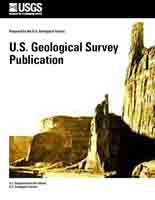 Summary Summary
The nearshore benthic habitat of the Santa Barbara coast and Channel Islands supports a diversity of marine life that are commercially, recreationally, and intrinsically valuable. Some of these resources are known to be endangered including a variety of rockfish and the White Abalone. State and National agencies have been mandated to preserve and enhance these resources and require detailed habitat characterization in order to do so. This project will characterize and map the benthic habitat in areas that have been selected because they have been set aside as National Sanctuaries or State Preserves, or are areas of ongoing or planned fish population studies.
Various management strategies are being developed to protect marine resources in the Santa Barbara Channel Islands Region. One approach under investigation is to implement no-take marine reserves (Agardy, T., 1997; Bohnsack, 1998; Roberts, 1997). One small reserve presently exists on Anacapa Island and there is a growing momentum to add additional reserves to form a reserve network (Lafferty et al., 2000). Reserves may provide relatively pristine marine communities in a wild state for study and appreciation. In addition, they may buffer some species from over-fishing. A key feature of marine reserve design is to protect a representation of the existing habitats in a region (Roberts, 1997). Unfortunately, the distribution of habitats is not well known in this area since the underwater equivalent of soils and vegetation maps that are widely available for terrestrial systems do not yet exist. Managers need habitat maps to help determine the most appropriate boundaries for reserves in a network in order to meet various criteria and goals (such as habitat representation, reserve size, habitat heterogeneity, reserve spacing, inclusion of sensitive habitats, etc.). Another use for habitat mapping is to better understand the distribution of those habitats that are particularly important to fished species or sensitive species. Combining habitat mapping with ongoing studies of egg and larval fish counts by the National Marine Fisheries Service (Russell Vetter), rockfish population studies by the California Department of Fish and Game (Dave VenTresca), and white abalone (Kevin Lafferty and others, USGS) will extend the ability to predict the distribution of these species and identify areas with appropriate habitat that might be suitable for restoration. Additional uses for habitat mapping include managing visitor use, kelp distribution, and archeological resources.
|
First posted February 8, 2001
Part or all of this report is presented in Portable Document Format (PDF). For best results viewing and printing PDF documents, it is recommended that you download the documents to your computer and open them with Adobe Reader. PDF documents opened from your browser may not display or print as intended. Download the latest version of Adobe Reader, free of charge.
|